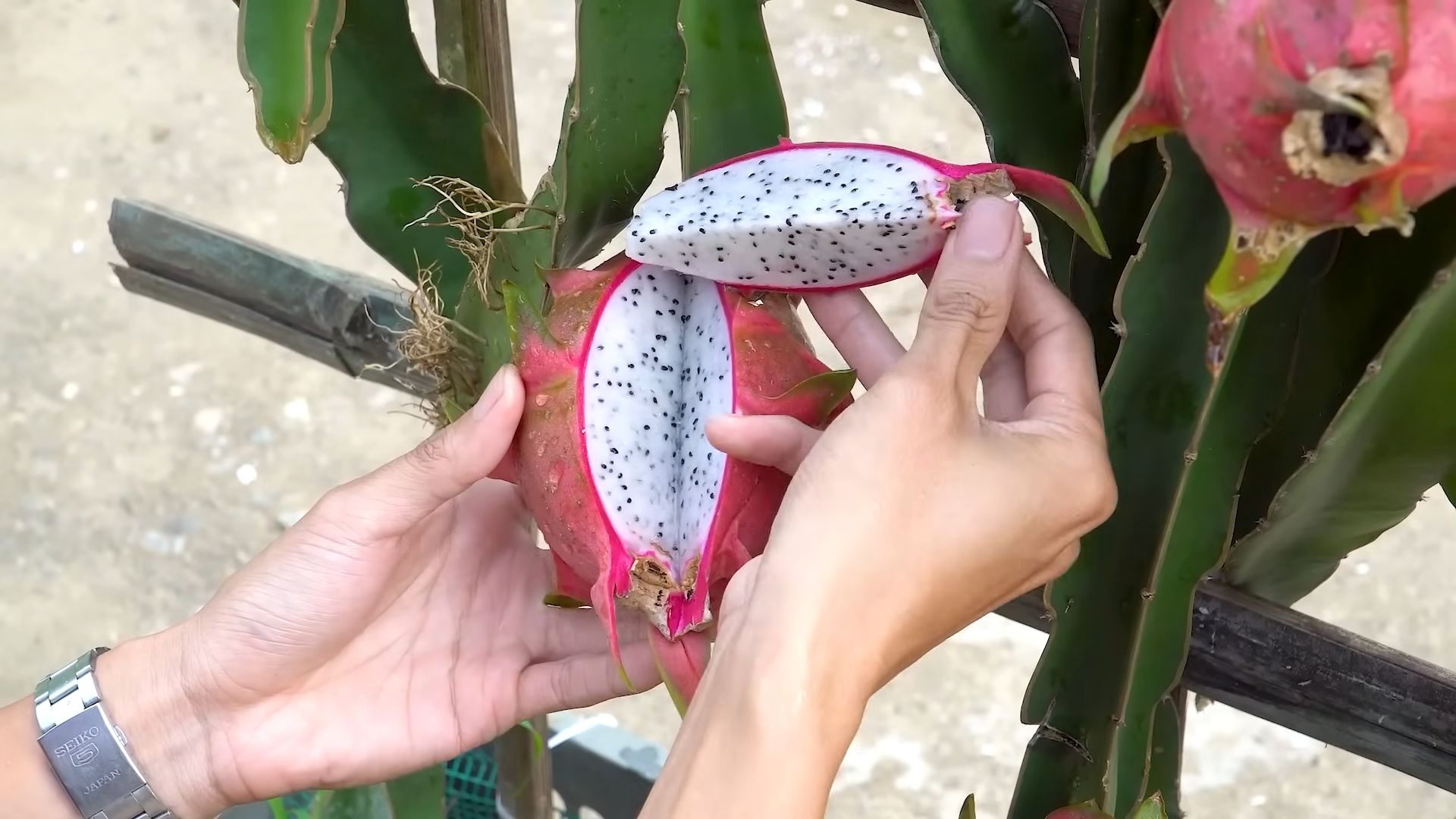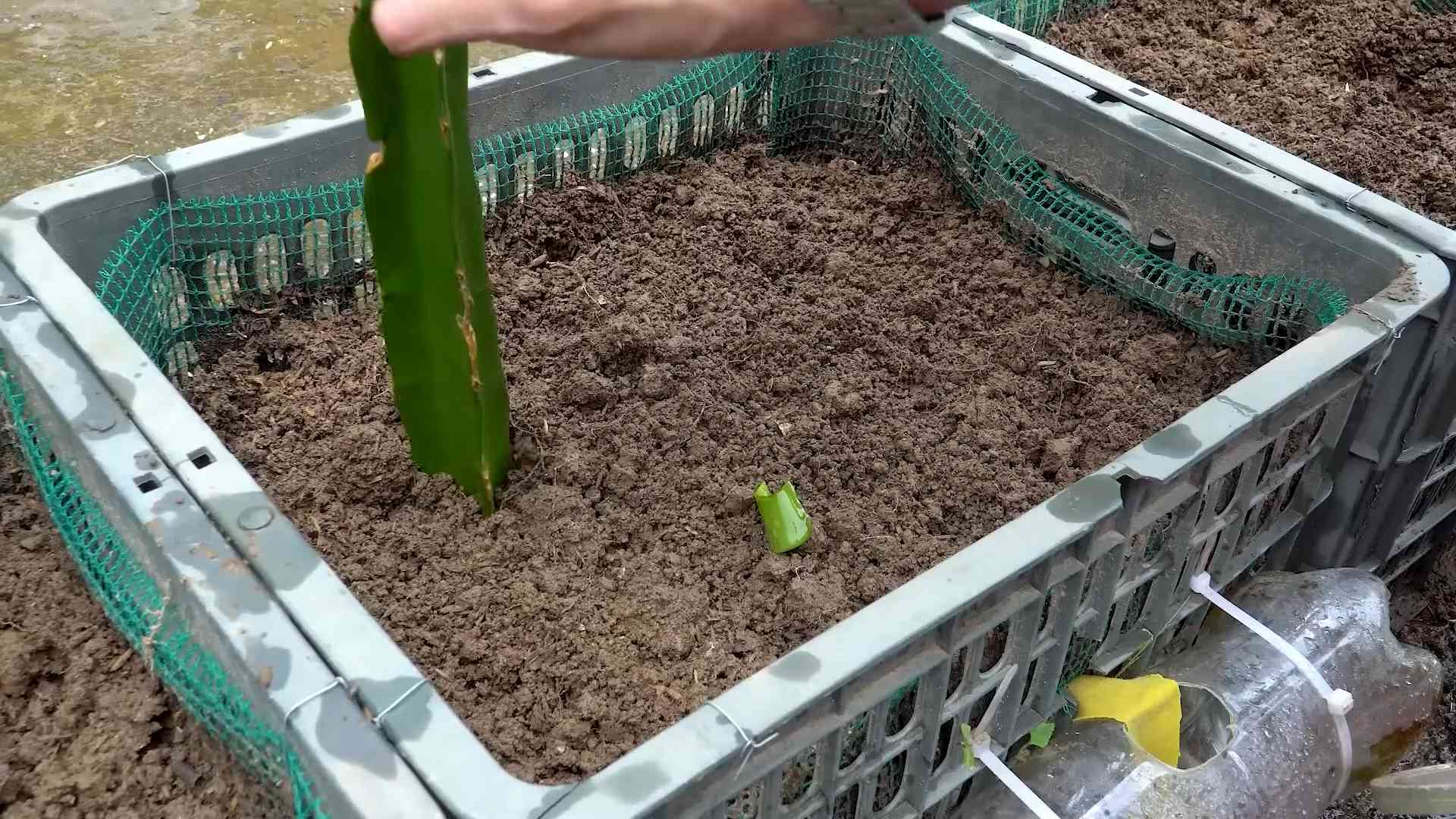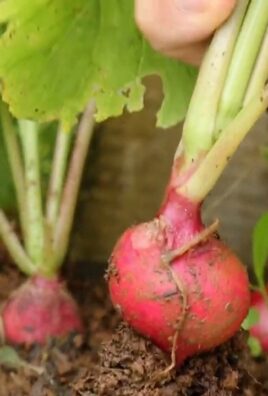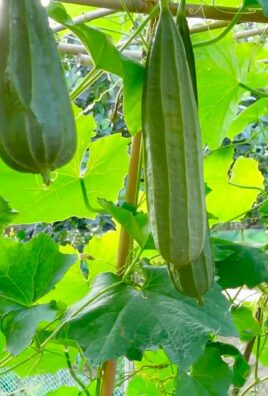Growing Red Dragon Fruit might seem like an exotic dream reserved for tropical climates, but I’m here to tell you that with a few clever tricks and a little DIY spirit, you can cultivate this vibrant and delicious fruit right in your own backyard (or even indoors!). For centuries, the Red Dragon Fruit, also known as Pitaya, has been cherished in Southeast Asia and Latin America, not only for its striking appearance but also for its incredible health benefits. Imagine impressing your friends and family with homegrown dragon fruit, bursting with flavor and packed with antioxidants!
But why should you embark on this DIY adventure? Well, store-bought dragon fruit can be expensive and often lacks the freshness and flavor of homegrown varieties. Plus, there’s something incredibly rewarding about nurturing a plant from a small cutting to a fruit-bearing beauty. This article is your ultimate guide to growing Red Dragon Fruit successfully, even if you’re a beginner gardener. I’ll share my favorite DIY hacks, from creating the perfect soil mix to building a sturdy support system, ensuring you’ll be harvesting your own dragon fruit in no time. Let’s get started and transform your garden into a tropical paradise!

Growing Red Dragon Fruit at Home: A DIY Guide
Okay, so you want to grow your own Red Dragon Fruit? Awesome! It’s a rewarding experience, and nothing beats the taste of a homegrown dragon fruit. It might seem intimidating, but trust me, with a little patience and the right guidance, you can totally do this. I’m going to walk you through everything you need to know, from choosing the right cutting to harvesting your delicious fruit.
Choosing Your Dragon Fruit Cutting
First things first, you need a cutting. You can buy these online, at nurseries, or even get one from a friend who already has a dragon fruit plant. Here’s what to look for:
- Healthy Appearance: The cutting should be green and plump, not shriveled or brown. Avoid anything that looks diseased or damaged.
- Size Matters (Sort Of): A cutting that’s at least 12 inches long is ideal. This gives it a good head start. Longer cuttings (up to 24 inches) are even better, as they’ll establish faster.
- Variety: Red Dragon Fruit comes in different varieties, each with slightly different characteristics. Do some research and choose one that suits your climate and taste preferences. Some popular varieties include ‘Physical Graffiti’, ‘American Beauty’, and ‘Dark Star’.
- Source: If possible, get your cutting from a reputable source. This increases the chances of it being a healthy and true-to-type variety.
Preparing Your Cutting for Planting
Before you stick that cutting in the ground, we need to prep it a bit. This helps prevent rot and encourages root growth.
- Callousing: This is crucial! Let the cut end of the cutting callous over for about a week. This means leaving it in a dry, shaded place. This allows the cut surface to dry and form a protective layer, preventing fungal infections. I usually just lean mine against a wall in my garage.
- Rooting Hormone (Optional): While not strictly necessary, dipping the calloused end of the cutting in rooting hormone can speed up the rooting process. You can find rooting hormone at most garden centers. Just follow the instructions on the package.
Planting Your Dragon Fruit Cutting
Now for the fun part! Getting your cutting into the soil.
- Choose the Right Pot (Initially): Start with a pot that’s at least 10-12 inches in diameter. This gives the roots plenty of room to grow. Make sure the pot has drainage holes! Dragon fruit hates sitting in soggy soil.
- Use Well-Draining Soil: Dragon fruit needs soil that drains quickly. A cactus or succulent mix is perfect. You can also make your own by mixing potting soil with perlite and sand. I usually go for a mix that’s about 1/3 potting soil, 1/3 perlite, and 1/3 sand.
- Planting Depth: Plant the calloused end of the cutting about 2-3 inches deep in the soil.
- Watering: Water thoroughly after planting, but then let the soil dry out almost completely before watering again. Overwatering is a common mistake that can lead to root rot.
- Location: Place the pot in a sunny location. Dragon fruit needs at least 6-8 hours of sunlight per day. A south-facing window is ideal if you’re growing it indoors.
Providing Support: The Trellis is Key
Dragon fruit is a climbing cactus, so it needs a strong support structure to grow on. This is super important for its health and fruit production.
- Why a Trellis? Without a trellis, your dragon fruit will just sprawl on the ground, making it susceptible to pests and diseases. A trellis allows it to climb and spread, maximizing sunlight exposure and air circulation.
- Types of Trellises: There are several options for trellises. A simple T-post with a circular frame at the top is a popular choice. You can also use a sturdy wooden post with horizontal supports. Get creative! Just make sure it’s strong enough to support the weight of a mature dragon fruit plant.
- When to Install the Trellis: You can install the trellis when you transplant your dragon fruit to a larger pot or directly into the ground. It’s best to do it early so the plant can start climbing right away.
Transplanting Your Dragon Fruit
Once your cutting has established roots (you’ll see new growth), it’s time to transplant it to a larger pot or directly into the ground.
- Choosing a Location (If Planting in the Ground): Select a sunny spot with well-draining soil. Dragon fruit prefers slightly acidic soil (pH 6.0-7.0).
- Preparing the Soil: Amend the soil with compost or other organic matter to improve drainage and fertility.
- Digging the Hole: Dig a hole that’s twice as wide and as deep as the root ball.
- Transplanting: Carefully remove the dragon fruit plant from its pot and gently loosen the roots. Place it in the hole and backfill with soil.
- Watering: Water thoroughly after transplanting.
- Attaching to the Trellis: Gently tie the dragon fruit stems to the trellis using soft twine or plant ties. As the plant grows, continue to tie it to the trellis.
Caring for Your Dragon Fruit Plant
Now that your dragon fruit is planted and supported, it’s time to focus on ongoing care.
- Watering: Water deeply when the soil is dry to the touch. Avoid overwatering, especially during the winter months. Dragon fruit is drought-tolerant, so it’s better to underwater than overwater.
- Fertilizing: Fertilize regularly during the growing season (spring and summer) with a balanced fertilizer. You can use a liquid fertilizer or a slow-release granular fertilizer. Follow the instructions on the package. I like to use a fertilizer that’s high in phosphorus to encourage flowering and fruiting.
- Pruning: Prune your dragon fruit plant regularly to maintain its shape and encourage fruit production. Remove any dead or damaged stems. You can also prune to control the size of the plant. The best time to prune is after the fruiting season.
- Pest and Disease Control: Dragon fruit is relatively pest and disease-resistant, but it can be susceptible to certain problems, such as scale insects, mealybugs, and fungal diseases. Inspect your plant regularly and take action if you see any signs of pests or diseases. You can use insecticidal soap or neem oil to control pests. For fungal diseases, use a fungicide.
- Pollination: Dragon fruit flowers are nocturnal and are typically pollinated by bats and moths. If you don’t have these pollinators in your area, you may need to hand-pollinate the flowers. Use a small paintbrush to transfer pollen from the stamen (male part) to the pistil (female part) of the flower. Hand-pollination is best done at night when the flowers are open.
Encouraging Flowering and Fruiting
Getting your dragon fruit to flower and fruit can be a bit tricky, but here are some tips to increase your chances of success:
- Sunlight: Make sure your plant is getting plenty of sunlight (at least 6-8 hours per day).
- Fertilizer: Use a fertilizer that’s high in phosphorus to encourage flowering.
- Watering: Avoid overwatering, especially during the flowering season.
- Stress: Sometimes, stressing the plant slightly can encourage it to flower. You can do this by withholding water for a short period of time.
- Maturity: Dragon fruit plants typically don’t start flowering until they’re 1-2 years old. Be patient!
Harvesting Your Dragon Fruit
Finally, the moment you’ve been waiting for! Harvesting your delicious dragon fruit.
- When to Harvest: Dragon fruit is ready to harvest when the skin turns bright red or pink and the “wings” (the scales on the fruit) start to dry out. The fruit should also feel slightly soft to the touch.
- How to Harvest: Use a sharp knife or pruning shears to cut the fruit from the stem. Leave a small piece of the stem attached to the fruit.
- Storage: Dragon fruit can be stored in the refrigerator for up to a week.
Troubleshooting Common Problems
Even with the best care, you might encounter some problems along the way. Here are some common issues and how to address them:
- Yellowing Leaves: This can be caused by overwatering, underwatering, nutrient deficiencies, or pests. Check the soil moisture and adjust your watering accordingly. Fertilize regularly with a balanced fertilizer. Inspect the plant for pests and treat as needed.
- Root Rot: This is usually caused by overwatering. Make sure your soil is well-d

Conclusion
So, there you have it! Growing Red Dragon Fruit at home, while it might seem like an exotic endeavor, is surprisingly achievable with a little patience, the right knowledge, and a dash of DIY spirit. We’ve walked you through the essentials, from selecting the perfect cutting to providing the ideal support structure and nurturing your plant to its full, fruit-bearing potential.
But why should you embark on this journey? Beyond the sheer satisfaction of cultivating your own food, growing Red Dragon Fruit offers a unique opportunity to connect with nature and witness the magic of plant life firsthand. Imagine the vibrant spectacle of those nocturnal blooms, the anticipation as the fruit develops its distinctive red hue, and the ultimate reward of biting into a juicy, homegrown Red Dragon Fruit. It’s an experience that store-bought fruit simply can’t replicate.
Furthermore, consider the health benefits. Homegrown Red Dragon Fruit is free from the pesticides and chemicals that can sometimes be found in commercially grown produce. You’ll be enjoying a truly organic and nutrient-rich treat. Plus, you’ll have a readily available source of this delicious and healthy fruit right in your own backyard.
Don’t be afraid to experiment! Once you’ve mastered the basics, you can explore different varieties of Red Dragon Fruit, each with its own unique flavor profile and characteristics. You could even try grafting different varieties onto a single plant for a diverse harvest. Consider adding companion plants around your dragon fruit to attract pollinators and improve soil health. Marigolds, basil, and sunflowers are excellent choices.
And remember, growing Red Dragon Fruit isn’t just about the fruit itself. It’s about the journey, the learning, and the connection you forge with your plant. It’s about creating a sustainable and rewarding hobby that you can enjoy for years to come.
We strongly encourage you to give this DIY project a try. Start small, be patient, and don’t be afraid to make mistakes. Every challenge is an opportunity to learn and grow, just like your Red Dragon Fruit plant.
Once you’ve harvested your first crop, we’d love to hear about your experience! Share your photos, tips, and stories in the comments below. Let’s build a community of Red Dragon Fruit enthusiasts and inspire others to embark on this exciting adventure. Happy growing!
Frequently Asked Questions (FAQ)
What is the best time of year to plant Red Dragon Fruit cuttings?
The ideal time to plant Red Dragon Fruit cuttings is during the late spring or early summer. This is when the weather is warm and the plant has ample time to establish itself before the cooler months arrive. Avoid planting during the winter, as the cold temperatures can hinder growth and even damage the cuttings. If you live in a region with mild winters, you may be able to plant in the fall, but be sure to provide adequate protection from frost.
How often should I water my Red Dragon Fruit plant?
Watering frequency depends on several factors, including the climate, soil type, and the age of the plant. Generally, you should water your Red Dragon Fruit plant deeply whenever the top inch of soil feels dry to the touch. During the growing season (spring and summer), this may mean watering every few days. In the fall and winter, when the plant is less active, you can reduce watering to once a week or even less. Avoid overwatering, as this can lead to root rot. Ensure your pot has good drainage.
What kind of fertilizer should I use for Red Dragon Fruit?
Red Dragon Fruit plants benefit from regular fertilization, especially during the growing season. Use a balanced fertilizer with an NPK ratio of 10-10-10 or 15-15-15. Apply the fertilizer according to the package instructions, typically every 4-6 weeks. You can also supplement with organic fertilizers like compost or worm castings. Avoid using fertilizers that are too high in nitrogen, as this can promote excessive vegetative growth at the expense of fruit production. During the flowering and fruiting stages, switch to a fertilizer with a higher phosphorus and potassium content to support fruit development.
How long does it take for Red Dragon Fruit to produce fruit?
Red Dragon Fruit plants typically start producing fruit within 6-12 months of planting, provided they are grown under optimal conditions. However, it can sometimes take up to two years for the first harvest. Factors that can affect fruiting time include the age and health of the cutting, the climate, the soil quality, and the amount of sunlight the plant receives. Proper care and maintenance, including regular watering, fertilization, and pruning, can help to accelerate fruit production.
My Red Dragon Fruit plant is flowering, but the flowers are not turning into fruit. What could be the problem?
There are several reasons why Red Dragon Fruit flowers may not be turning into fruit. One common reason is lack of pollination. Red Dragon Fruit flowers are nocturnal and rely on nocturnal pollinators like bats and moths. If you live in an area with limited nocturnal pollinator activity, you may need to hand-pollinate the flowers. Use a small paintbrush to transfer pollen from the stamen (male part) to the pistil (female part) of the flower. Another possible reason is nutrient deficiency. Ensure your plant is receiving adequate fertilization, especially with phosphorus and potassium. Stress factors like extreme temperatures, drought, or pest infestations can also prevent fruit set.
How do I prune my Red Dragon Fruit plant?
Pruning is essential for maintaining the health and productivity of your Red Dragon Fruit plant. The best time to prune is after the fruiting season. Remove any dead, damaged, or diseased branches. Also, prune back any overly long or crowded branches to improve air circulation and sunlight penetration. Encourage lateral growth by trimming the tips of the main stems. This will promote the development of fruiting branches. Be sure to use clean and sharp pruning shears to prevent the spread of disease.
What are some common pests and diseases that affect Red Dragon Fruit?
Red Dragon Fruit plants are generally resistant to pests and diseases, but they can occasionally be affected by problems such as scale insects, mealybugs, aphids, and fungal diseases like stem rot. Inspect your plant regularly for signs of infestation or disease. Treat any problems promptly with appropriate insecticides or fungicides. Good cultural practices, such as proper watering, fertilization, and pruning, can help to prevent pest and disease problems.
Can I grow Red Dragon Fruit in a container?
Yes, Red Dragon Fruit can be successfully grown in containers, making it a great option for those with limited space. Choose a large container with good drainage. Use a well-draining potting mix that is rich in organic matter. Provide a sturdy trellis or support structure for the plant to climb on. Container-grown plants may require more frequent watering and fertilization than those grown in the ground.
How do I protect my Red Dragon Fruit plant from frost?
Red Dragon Fruit plants are sensitive to frost and can be damaged by freezing temperatures. If you live in an area with cold winters, you will need to protect your plant from frost. If your plant is in a container, you can move it indoors to a protected location. If your plant is in the ground, you can cover it with a frost blanket or burlap. You can also wrap the trunk of the plant with insulation. Avoid watering the plant before a frost, as this can make it more susceptible to damage.
What are the different varieties of Red Dragon Fruit?
There are several different varieties of Red Dragon Fruit, each with its own unique characteristics. Some popular varieties include:
* **Hylocereus undatus:** This is the most common variety, with white flesh and pink skin.
* **Hylocereus costaricensis:** This variety has red flesh and pink skin.
* **Hylocereus megalanthus:** This variety has yellow skin and white flesh.
* **Hylocereus polyrhizus:** This variety has red skin and red flesh.Each variety has a slightly different flavor profile and texture. Experiment with different varieties to find your favorite.




Leave a Comment